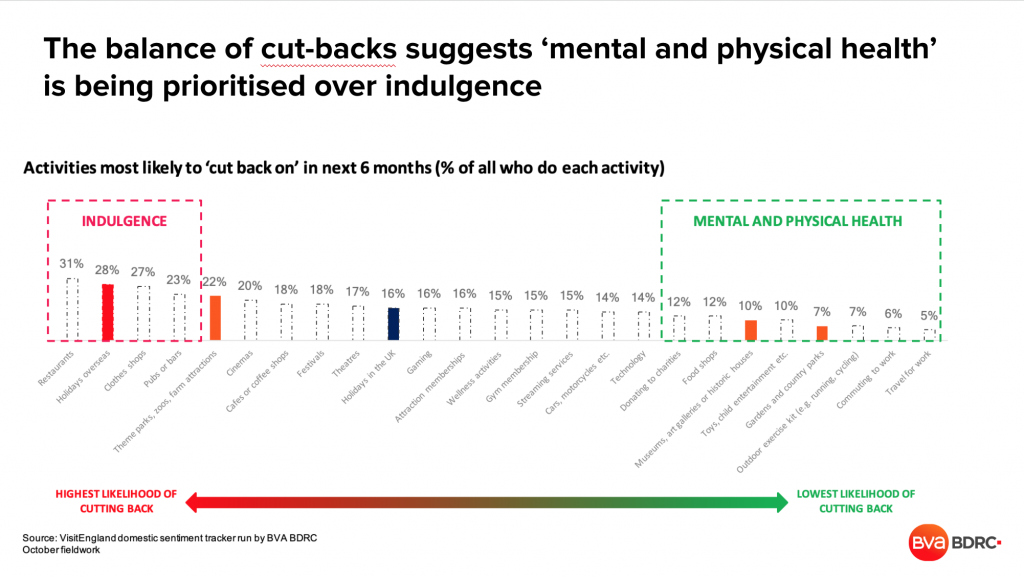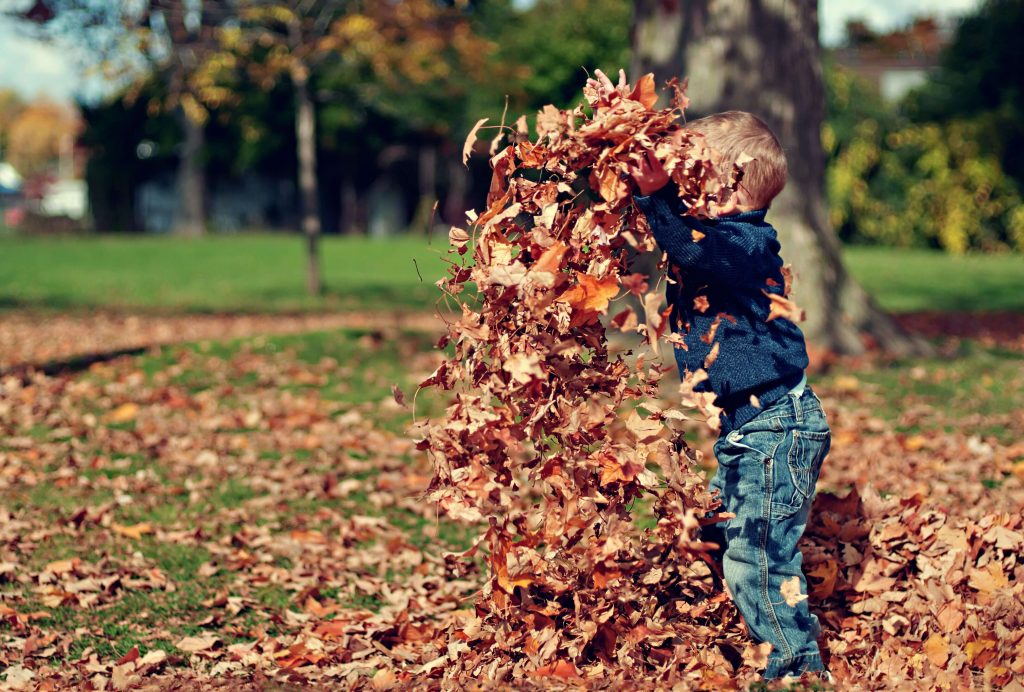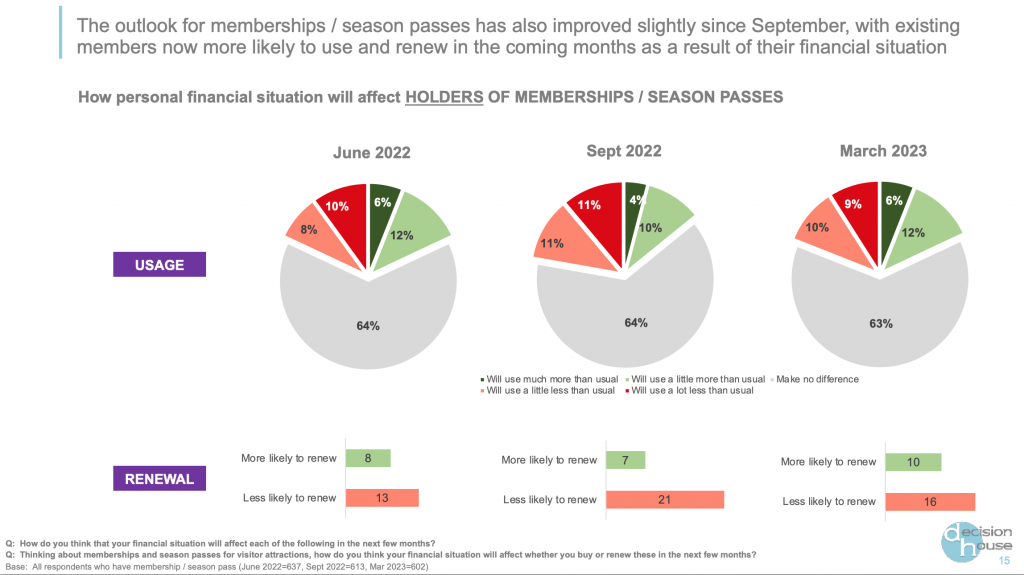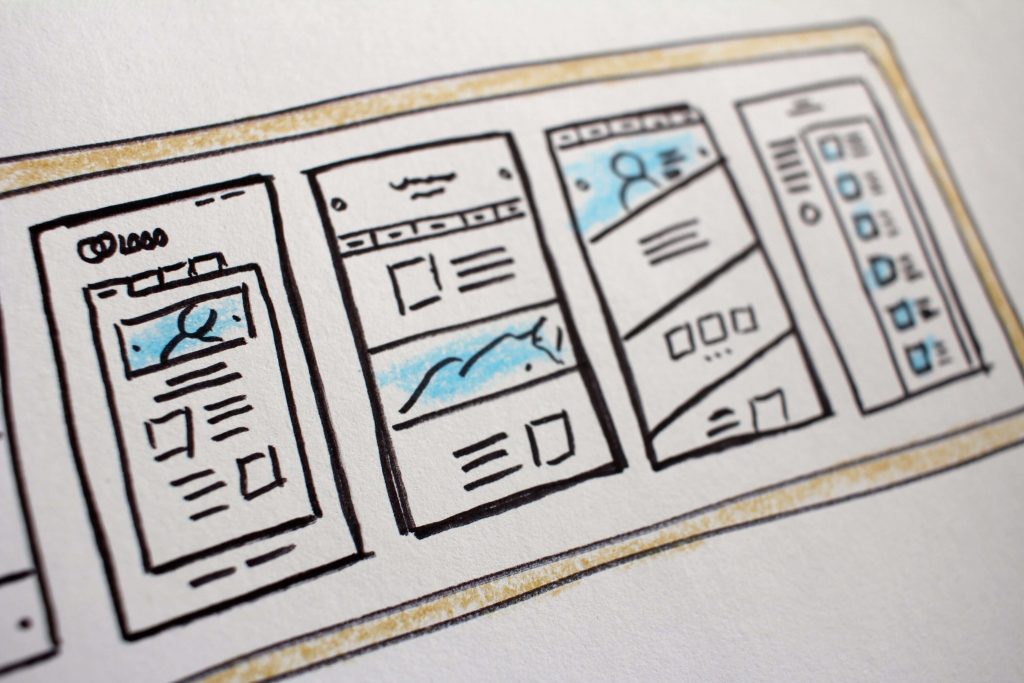According to research carried out by Tourism Insight specialists the BVA BDRC, attitudes to spending are improving, but the public remain concerned about their finances and are making cut backs.

1 in 4 of the population have been hit hard by the cost of living crisis and are understandably being cautious and careful about spending.
But, although there is an overall trend of ‘cutting back’, not all activities are equal in this. People will have a hierarchy of non-essential and essential leisure spending.

There’s two things that stand out on this slide:
- Museums, art galleries, historic houses, gardens and country parks are way down the list. So these types of attractions are likely to be insulated from cut-backs.
- People are looking to cut back on indulgence but less on health and necessity.
The main cut backs are to indulgent activities and the smallest cut backs are to mental and physical health – and most visitor attractions fall into that category.
Google Trends search terms tells us that searches for ‘wellness’ have been steadily increasing since around 2012.
So for visitor attractions there is a need to stand out more than ever, but also a lot of opportunity. And one of those opportunities is around wellness and the message that being outside is good for you, good for the soul.
Most tourism activities have wellness at their heart, so introduce that wellness messaging into your marketing activities. Frame and promote the leisure activities available at the places we are already connected to.
There is also a clear opportunity here in that overseas holidays are 28% likely to be cut this year – so we may well see another mini staycation boom. This is where memberships can be used to your advantage.
Where are the opportunities for visitor attractions?
I recently gave a talk to a leading visitor attraction on where I felt the biggest opportunities lie for the sector for 2023/24. These are my takeaways from conversations I’ve had with fellow attraction professionals.
Diversification
Diversification of income streams has been the topic of the year so far. What more can an attraction sell than admission tickets, food and gifts?
Events have become more and more mainstream, but in a recent Skip the Queue podcast interview with Kingston Miles, Head of Commercial Development at English Heritage, Kingston suggests asking yourself “What do I have beyond my shop, beyond my Cafe, beyond admissions. What product could I create?”
Is there an opportunity for domestic filming location, or working with brands and editorial magazines to provide spaces for photo shoots? Or developing brand partnerships for products?
English Heritage have an incredible portfolio of holiday lets situated within the boundary of their properties, which brings a secondary income to the organisation. They also have a brand licensing program that allows the to partner with other brands to jointly develop products. Those products are then used to furnish the holiday lets, meaning guests can purchase the things they’ve used and interacted with from the holiday cottages. Kingston calls this ‘Experiential Shopping’, which I think is utterly genius.
Could you do the same?
Being Essential
Remembering that people will have a hierarchy of non-essential and essential leisure spending, how can you make sure that your attraction is in the essential bracket? How do you make it a necessity?
Our good friends and experts in tourism and conservation marketing, Navigate wrote an excellent blog on this topic, and I’m sharing a couple of highlights from it here.

A parents duty
How can we create the next generation of artists, dancers, or actors without taking them to galleries and theatres?
How can we encourage kids to become nature lovers, conservationists, grounds-people, without taking them to parks, and gardens and nature reserves?
Inspiring future generations with the vast careers and passions they could pursue, happens through experiences, so we need to be mindful of not robbing them of these experiences.
Parents will see this as an essential duty, to expose their children to as much of the world as possible so they can make the best choices. Attractions can lean into this by creatively showing a straight line from visiting them, to inspiring future careers.
These are all things you can talk about in blogs, on social media – in campaigns that you run, events that you hold.
Stuff versus experience
Life isn’t about the things we have, it’s about the places we’ve been.
But how can attractions leverage this?
As Anthony Rawlins writes “Perhaps an everyday comparison might be better here. It’s not about those five lattes during the week, it’s the thrills, smiles and screams when you go with your partner to a theme park for the weekend. And it’s not about that new t-shirt you purchased or that extra set of trainers you don’t need, it’s about taking the grandparents on a steam train ride!”
Everyday comparisons of stuff vs experiences are the way to go with your marketing messages here, and attractions could try and localise this too. Specific examples relatable to each audience of the everyday stuff people might want to forgo, for the unique experiences they could have might be the way to do it.
The ‘stuff versus experience’ message is the one that resonates with me the most. It’s the biggest reason Rubber Cheese specialises in working with Visitor Attractions. Our team is made up of people that spend on experiences, not things – and we love nothing more than being part of creating amazing memories for visitors.
Memberships
According to research commissioned by ALVA from Decision House, the outlook for memberships has improved a lot since September 2022.

Existing members are much more likely to renew, and there’s an appetite to purchase memberships too, especially when based on a “value for money” message.
If you already have this message embedded within your membership offering, great!
If not, what more can you offer your members? 10% off in your shop, a reduced entry fee for guests visiting with members.
We talked earlier about the wellness aspect, and that people are making less reduction in spend to places that facilitate their wellness.
I believe the biggest opportunity here is to promote the benefits of the leisure and wellness activities that sit within your membership. Talk about the positive benefits of being outside in nature, the outdoor events that members can get a discount on, a safe place to teach your child to ride their bike for example.
Digital
When it comes to your website, there’s not always a need to start from scratch, especially when budgets are tight.
Make do and mend.
Originally a campaign and pamphlet issued by the British Ministry of Information in the midst of WWII, it still seems highly relevant now as we focus more on sustainability and reusables.
I know I head to Vinted and eBay way more than the high street, and I’m much more conscious of the longevity of clothes I buy. Classic over fast fashion.
But is that the same for digital products? Your website?

The general consensus within the industry is that on average a website can last between 2-5 years before it needs to be rebuilt. 2 seems crazy, 5 I’m more comfortable with.
But we need to take the same approach with websites as we are with reusables. Spend on quality and make more of what you already have.
More often than not, there’s a long list of small improvements you can make to your existing website, that will add up and start to make big change.
And if you’re spend £££ on driving visitors to your site, yet those visitors don’t convert, that’s money down the drain.
What can you do about it?
1. Benchmark your attraction website
If you run or market a visitor attraction, then download our 2022 Visitor Attraction Website Report and benchmark your website against national averages
2. Review your site speed
Run a Lighthouse test and work through the improvement to speed up your website. When we took over the support of the National Marine Aquarium’s website in 2022, their site speed was 48 on Lighthouse.
We carried out a series of tasks to improve it:
- Remove unwanted WP plugins
- Installed Smush WP plugin – lazy loading, image optimisation/compression
- Improved stylesheets and javascript files are compiled
- Removing unused scripts
- Installed WP-Rocket – uses caching to accelerate website loading times.
- Activated GZIP – a file format and a software application used for file compression
We’ve been able to increase their score to 79, shaving off valuable seconds from the page load speed.
3. Improve your UX
Download our free ebook full of digital strategies to help you improve your user experience. How’s your site performing on mobile? Are your calls to action clear? Can visitors find what they need quickly and simply?
4. Come and have a chat with me
Taking a user centric approach, Rubber Cheese focus on making continual improvements that deliver better conversions and increased revenue. We can support your existing #WordPress or #Umbraco website, making better use of what you already have, with the added bonus of our sector experience.
It’s not always about new.
Call Kelly on 01279 883119 to discuss how we can support your existing website today.
Related articles
Visitor Attractions
Website design for Visitor Attractions
Visitor Attractions
Lovely places to work from inside attractions, museums and libraries
Visitor Attractions
2022 Visitor Attraction Website Survey